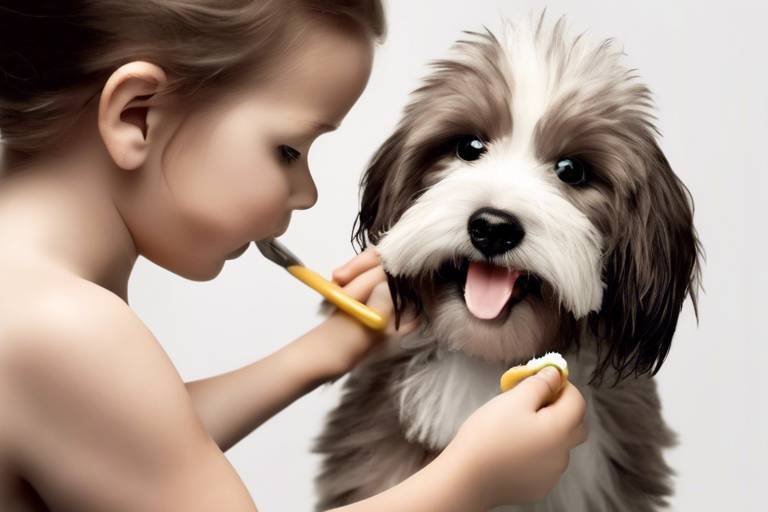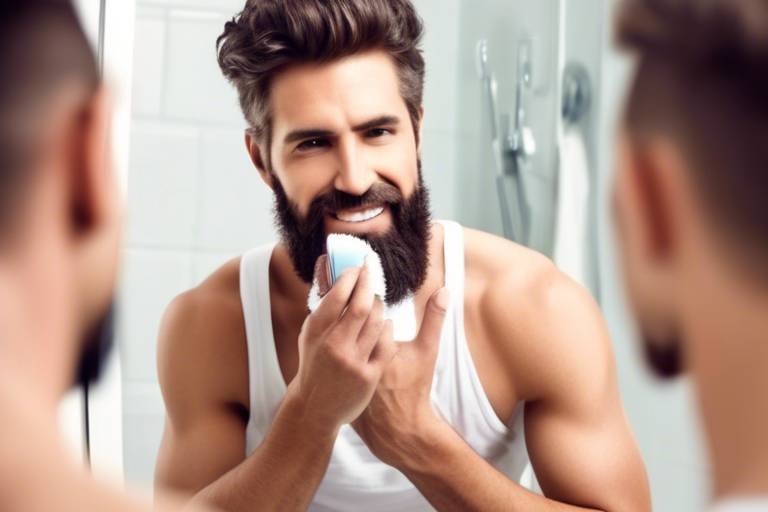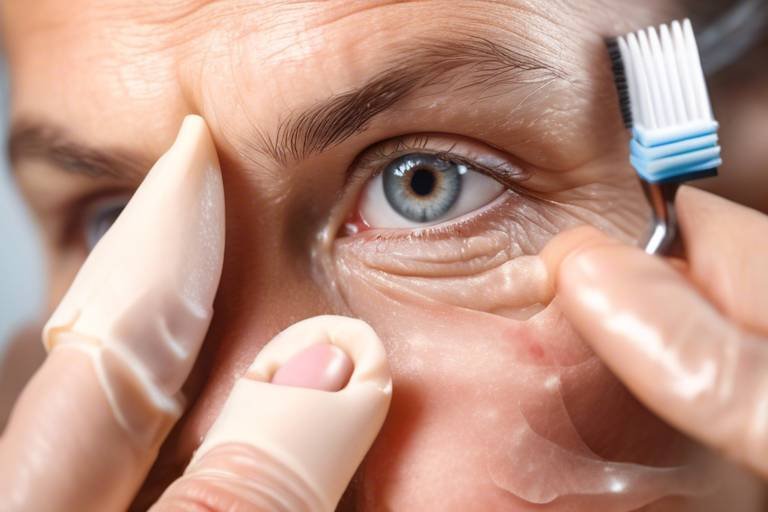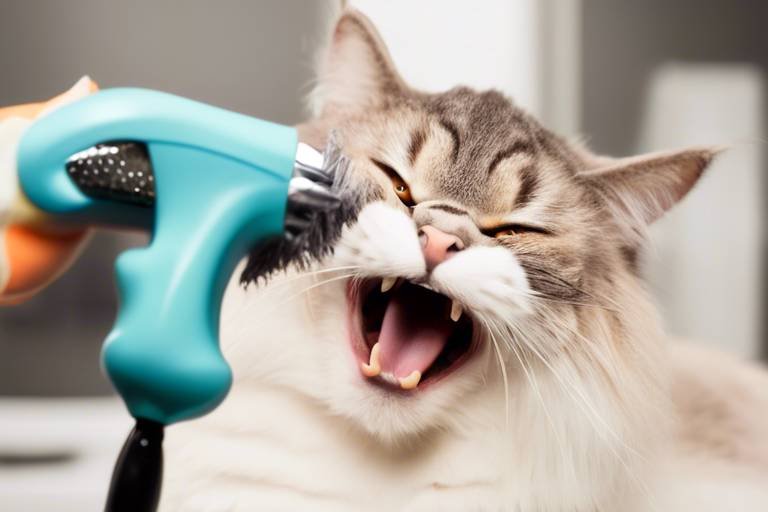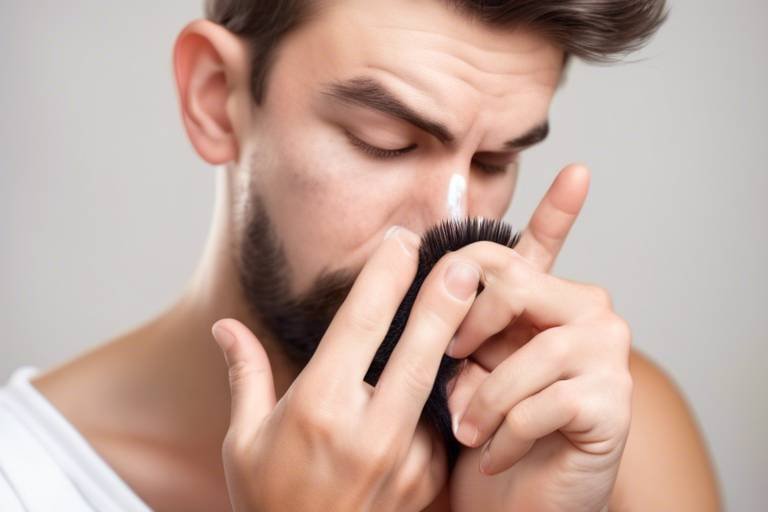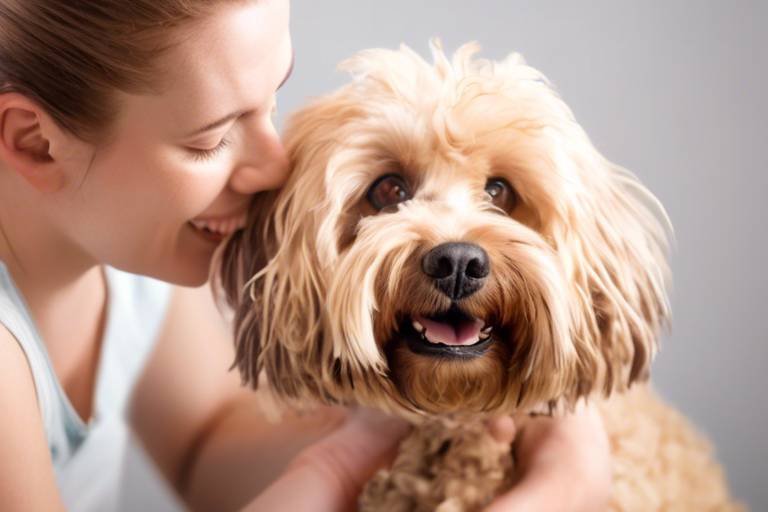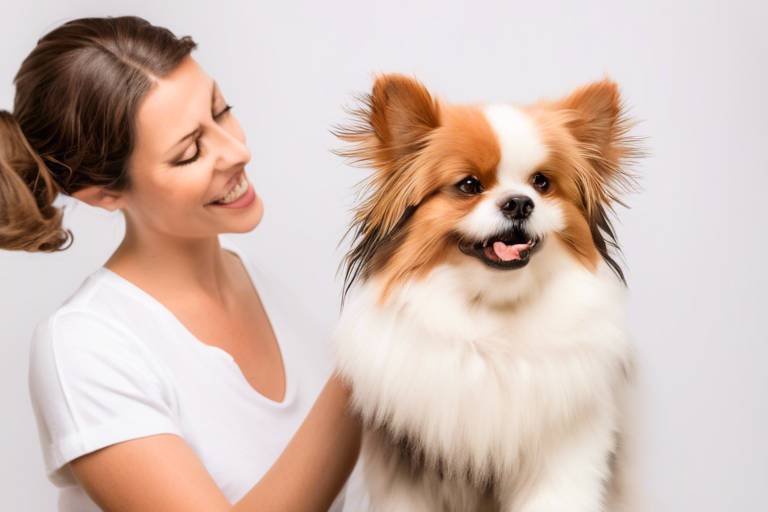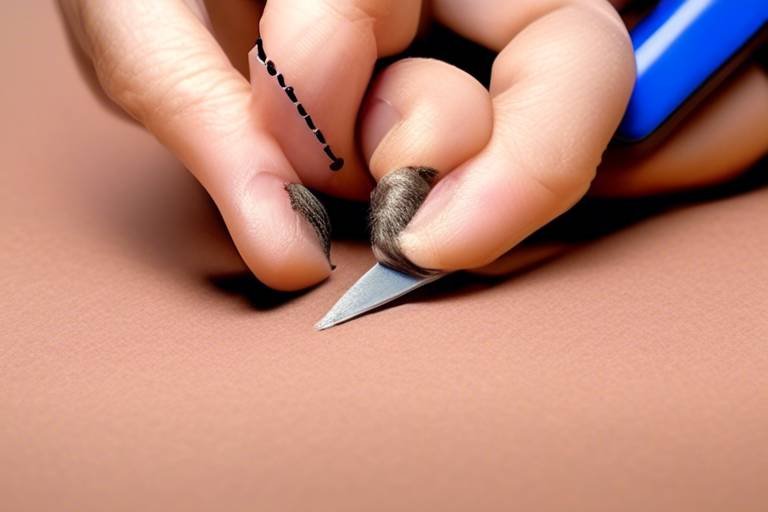The Role of Grooming in Maintaining Pet Health
When it comes to our furry companions, grooming is more than just a beauty routine—it's a vital part of their overall health and well-being. Just like we feel fresh and invigorated after a good shower or haircut, our pets thrive when they receive regular grooming. It’s a fundamental aspect that not only keeps them looking good but also plays a significant role in preventing health issues, promoting hygiene, and strengthening the bond between pets and their owners.
Imagine this: a fluffy dog, its coat matted and tangled, struggling to enjoy a sunny day in the park. That’s not just an aesthetic issue; it can lead to skin irritations, infections, and discomfort. Regular grooming helps to eliminate these problems before they escalate. By making grooming a regular part of your pet’s routine, you’re not only ensuring they look their best but also safeguarding their health. So, let's dive deeper into why grooming is essential and how you can effectively incorporate it into your pet care regimen.
Regular grooming is not just a luxury; it’s a necessity for pets. Think of it as a health check-up that you can perform at home. Grooming helps to:
- Prevent Health Issues: Regular brushing and bathing can help catch skin problems, parasites, and other health concerns early on.
- Promote Hygiene: Keeping your pet clean reduces the risk of infections and parasites, ensuring they stay healthy and happy.
- Enhance Bonding: Grooming sessions provide quality time between you and your pet, strengthening your emotional connection.
By making grooming a routine, you’re not just maintaining your pet's appearance; you’re actively contributing to their health and happiness. It’s a win-win situation!
To groom your pet effectively, having the right tools is crucial. Just like a chef needs the right knives, a pet owner needs appropriate grooming supplies. Here are some essential items you should consider:
| Tool | Purpose |
|---|---|
| Brush | Removes loose hair and prevents matting. |
| Comb | Helps detangle fur and check for parasites. |
| Shampoo | Maintains skin health and cleanliness. |
| Nail Clippers | Prevents overgrown nails that can cause pain. |
Each tool serves a specific purpose, tailored to your pet's needs. For instance, a slicker brush is fantastic for long-haired breeds, while a bristle brush works wonders for short-haired pets. Understanding which tools to use can make grooming easier and more effective.
Choosing the appropriate brush for your pet's coat type can significantly impact grooming effectiveness. If you have a fluffy Golden Retriever, a pin brush might be your best friend. On the other hand, a short-haired Beagle would benefit from a bristle brush. Each brush has its unique purpose, and selecting the right one can make the grooming process smoother and more enjoyable for both you and your pet.
Proper brushing techniques not only remove loose hair but also promote healthy skin and coat. For instance, when brushing your pet, always follow the direction of hair growth. This technique helps to avoid discomfort and ensures a thorough grooming session. For long-haired pets, consider sectioning the fur to tackle tangles more effectively. It’s all about making the experience pleasant for your furry friend!
Understanding how often to brush your pet is vital for maintaining coat health. While some pets may need daily grooming, others might only require it a few times a week. Factors such as coat type, shedding patterns, and lifestyle all play a role in determining the right frequency. For example, a heavy-shedding breed will likely need more frequent brushing, especially during shedding season.
Bathing is another key aspect of grooming that helps maintain cleanliness and skin health. Regular baths can keep your pet smelling fresh and reduce the risk of skin issues. However, it’s essential to use pet-specific shampoos that won’t irritate their skin. Generally, bathing once a month is a good rule of thumb, but this can vary based on your pet's activity level and coat type.
Grooming offers numerous benefits beyond aesthetics. Regular grooming can lead to improved skin health, early detection of health issues, and enhanced comfort. Let’s explore these advantages:
One of the most significant benefits of grooming is the early detection of skin conditions, parasites, and other health issues. During grooming sessions, you can check for lumps, bumps, or any signs of discomfort that may require veterinary attention. This proactive approach can make a world of difference in your pet’s health and longevity.
Grooming can significantly enhance a pet's emotional well-being. It’s a calming routine that can reduce anxiety and stress. Just like a good massage can help us unwind, grooming can foster a sense of security and comfort for our pets. Establishing a regular grooming routine can help your pet feel more relaxed and secure in their environment.
Deciding between professional grooming services and DIY grooming at home depends on various factors. While professional groomers are trained and equipped to handle all types of breeds and coat types, DIY grooming can be a cost-effective and bonding experience. Consider your pet’s grooming needs, your budget, and your comfort level with grooming tools when making this decision.
Q: How often should I groom my pet?
A: It depends on the breed and coat type. Long-haired pets may need daily grooming, while short-haired breeds may only require it a few times a week.
Q: What tools do I need for grooming?
A: Essential tools include a brush, comb, shampoo, and nail clippers. The specific tools may vary based on your pet's coat type.
Q: Can grooming help with my pet's anxiety?
A: Yes! Regular grooming can create a calming routine that reduces anxiety and fosters a sense of security.
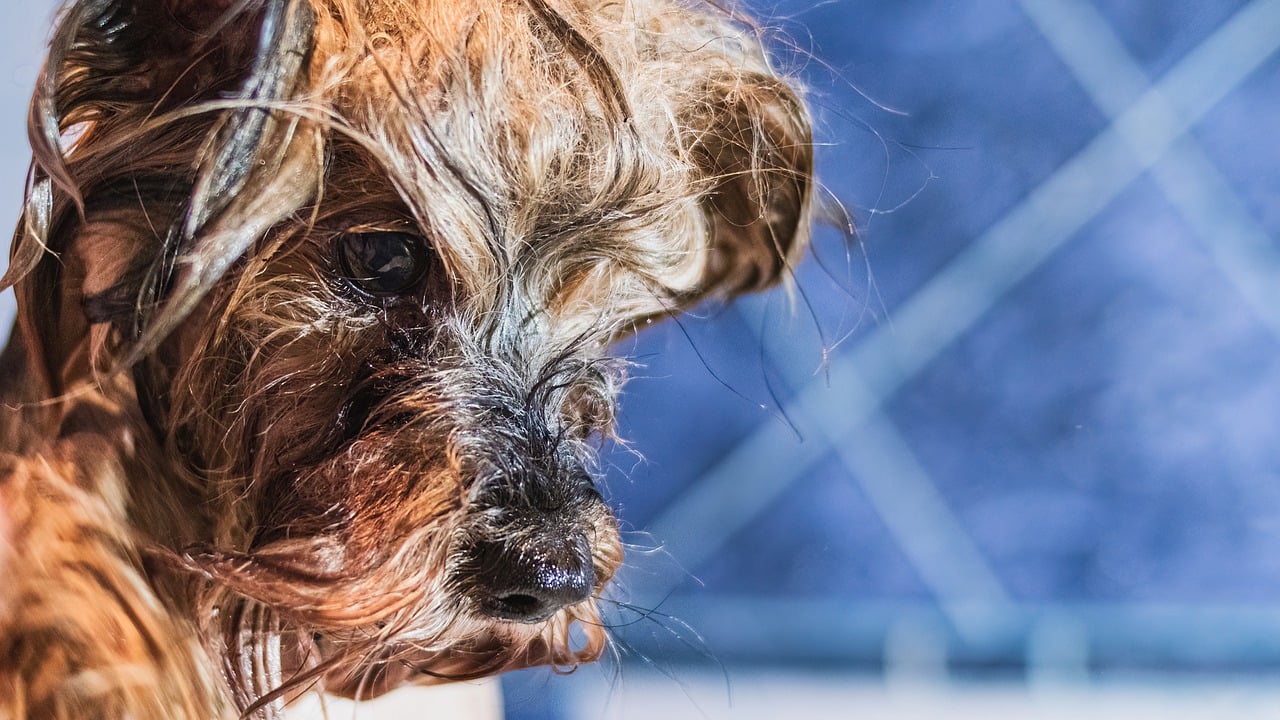
Importance of Regular Grooming
Regular grooming is not just a luxury for our furry friends; it’s a necessity that plays a crucial role in their overall health and well-being. Think of grooming as a preventive health measure—much like regular check-ups for humans. It helps to identify potential health issues before they become serious problems. For instance, during a grooming session, you might notice unusual lumps, bumps, or skin irritations that could indicate underlying health concerns. By being proactive, you can catch these issues early and consult your veterinarian, which could save your pet from unnecessary discomfort and expensive treatments.
Moreover, grooming promotes hygiene. Pets can easily accumulate dirt, debris, and parasites in their fur, which can lead to skin infections and other health issues. Regular brushing removes loose hair and dander, keeping your home cleaner and your pet healthier. It’s like giving your pet a mini spa day, where they leave feeling fresh and rejuvenated. Additionally, grooming helps to distribute natural oils throughout your pet's coat, resulting in a shiny and healthy appearance.
But the benefits of grooming extend beyond physical health. It’s also an opportunity to strengthen the bond between you and your pet. Taking the time to groom your pet shows them that you care, and it can be a relaxing experience for both of you. Many pets enjoy the attention and the gentle touch of a brush or comb. It’s a moment of connection that can enhance your relationship and build trust. When you make grooming a routine part of your pet care, you’re not just maintaining their appearance; you’re also investing in their emotional well-being.
In summary, regular grooming is essential for:
- Preventing health issues: Early detection of skin conditions, parasites, and other health problems.
- Promoting hygiene: Keeping your pet clean and reducing the risk of infections.
- Enhancing bonding: Strengthening your relationship through shared grooming time.
By incorporating regular grooming into your pet care routine, you ensure that your furry companion stays healthy, happy, and looking their best. So, grab those grooming tools and make it a fun, bonding experience with your pet!

Grooming Tools and Supplies
When it comes to keeping our furry friends looking their best, having the right grooming tools is not just a luxury—it's a necessity! Imagine trying to paint a masterpiece without the right brushes; the same goes for grooming your pet. Each tool serves a specific purpose, ensuring that your pet remains healthy, comfortable, and clean. So, what are the essential supplies you need to have in your grooming toolkit? Let’s dive into the must-haves!
First and foremost, brushes are your best friends. Depending on your pet's coat type—whether it's short, long, curly, or wiry—different brushes will yield different results. For instance, a slicker brush is excellent for removing tangles from long-haired breeds, while a bristle brush works well for short-haired pets. Choosing the right brush can make all the difference in your grooming routine, as it helps in distributing natural oils and keeping the coat shiny and healthy.
Next up, we have combs. These little wonders are perfect for detangling and smoothing out your pet's fur, especially in those hard-to-reach areas like behind the ears or under the legs. A metal comb is particularly useful for pets with thick fur, while a wide-toothed comb can help with detangling without causing discomfort. Remember, grooming should be a pleasant experience for your pet, so choose tools that feel good against their skin.
Now, let's talk about shampoos. Not all shampoos are created equal, and selecting the right one is crucial for your pet's skin health. Opt for a gentle, hypoallergenic shampoo that suits your pet's specific needs. For instance, if your pet has sensitive skin, look for products that are free from harsh chemicals and fragrances. Additionally, consider using a conditioner to help maintain moisture and prevent mats from forming.
Don't forget about nail clippers! Keeping your pet's nails trimmed is vital not just for aesthetics but also for their overall health. Long nails can cause discomfort and lead to mobility issues. There are various types of clippers available, including guillotine-style and electric grinders. Choose one that you feel comfortable using and that suits your pet's size. Regular trimming can make a world of difference in your pet's comfort.
To make your grooming experience even smoother, consider investing in a grooming table. This can provide a stable surface for your pet, making the process easier for both of you. Plus, a grooming table often comes with adjustable heights, allowing you to work at a comfortable level, reducing strain on your back.
In summary, having the right grooming tools and supplies is essential for maintaining your pet's health and appearance. From brushes and combs to shampoos and nail clippers, each item plays a role in ensuring your furry friend looks and feels their best. Make sure to regularly check and replace any worn-out tools to keep your grooming sessions effective and enjoyable!
Here are some common questions pet owners have regarding grooming tools and supplies:
- How often should I groom my pet? The frequency depends on your pet's coat type. Long-haired breeds may need grooming several times a week, while short-haired breeds can often get by with monthly grooming.
- Can I use human shampoo on my pet? It's not recommended, as human shampoos can disrupt the pH balance of your pet's skin. Always opt for pet-specific shampoos.
- What if my pet hates being groomed? Start slowly and make grooming a positive experience with treats and praise. Gradually introduce them to the tools to ease their anxiety.
Choosing the Right Brush
When it comes to grooming your beloved pet, one of the most critical decisions you’ll make is selecting the right brush for their coat type. Just like you wouldn’t use a fine-toothed comb on curly hair, the same logic applies to our furry friends. Each pet has unique grooming needs based on their coat texture, length, and shedding patterns. Choosing the appropriate brush not only makes the grooming process more efficient but also enhances your pet's overall comfort and health.
To simplify this process, let’s break it down by coat types. Here’s a quick overview of brushes that work best for various fur textures:
| Coat Type | Recommended Brush | Purpose |
|---|---|---|
| Smooth Coats | Slicker Brush | Removes dirt and loose hair |
| Short Coats | Bristle Brush | Enhances shine and distributes natural oils |
| Medium Coats | Undercoat Rake | Removes undercoat and prevents matting |
| Long Coats | Pin Brush | Detangles and smooths fur |
| Curly Coats | Wide-Toothed Comb | Prevents breakage and removes tangles |
Now, you might be wondering, “How do I know which brush to use?” Well, it all starts with a good look at your pet's coat. For instance, if your dog has a double coat (like a Siberian Husky), you’ll want to invest in an undercoat rake to effectively manage shedding. On the other hand, if your feline friend has a short-haired coat, a simple bristle brush will do the trick to keep their fur shiny and healthy.
Another important aspect to consider is your pet’s comfort during grooming. Some pets may be more sensitive to brushing than others. If your pet seems anxious or uncomfortable, it may be worth exploring softer bristles or gentler brushing techniques. Remember, grooming should be a bonding experience, not a battle!
In conclusion, choosing the right brush is not just about aesthetics; it’s about ensuring your pet's coat remains healthy and well-maintained. Take the time to assess your pet's specific needs, and don’t hesitate to consult with your veterinarian or a professional groomer for personalized recommendations. After all, a well-groomed pet is a happy pet!
- How often should I brush my pet? The frequency of brushing depends on your pet's coat type. Long-haired pets may need daily brushing, while short-haired pets might only require weekly grooming.
- Can I use human brushes on my pet? It's best to use brushes specifically designed for pets, as human brushes may not be effective and could irritate your pet's skin.
- What should I do if my pet hates being brushed? Gradually introduce the brush to your pet, using treats and positive reinforcement to create a more enjoyable experience.
Brushing Techniques
When it comes to grooming your furry friend, mastering the right can make all the difference in maintaining their coat health and overall well-being. Just like how we enjoy a relaxing massage, pets also appreciate a gentle grooming session that not only removes loose hair but also stimulates their skin and promotes circulation. So, let's dive into some effective methods that will leave your pet feeling pampered and loved.
First off, it's crucial to understand that different pets require different brushing methods. For instance, long-haired breeds like the Persian cat or the Golden Retriever need a more delicate touch to avoid tugging and pulling on their sensitive fur. On the other hand, short-haired breeds, such as Beagles or Boxers, can handle a firmer hand. A good rule of thumb is to always start with gentle strokes and gradually increase pressure based on your pet's comfort level.
One popular technique is the sectional brushing method. This involves dividing your pet's coat into manageable sections. Start at the head and work your way down to the tail. By focusing on one section at a time, you ensure that you are thorough and attentive, which can help prevent matting and tangling. For pets with particularly thick or curly coats, using a dematting comb can be a lifesaver. This tool allows you to gently detangle knots without causing discomfort.
Another important aspect of brushing techniques is the direction of your strokes. Always brush in the direction of hair growth. This not only feels more comfortable for your pet but also helps to distribute natural oils throughout their coat, keeping it shiny and healthy. Additionally, don't forget to pay special attention to areas that are prone to tangling, such as behind the ears, under the legs, and around the tail. Regular brushing in these spots can help prevent painful knots.
Finally, be sure to incorporate positive reinforcement into your grooming routine. Treats, praise, and gentle pets can turn brushing from a chore into a cherished bonding experience. This way, your pet will associate grooming with positive outcomes, making future sessions much easier. Remember, grooming is not just about maintaining a beautiful coat; it's about enhancing the bond you share with your beloved companion.
Frequency of Brushing
Understanding how often to brush your pet is vital for maintaining coat health and overall hygiene. Just like we wouldn't want to wear the same clothes for days on end, our furry friends also need a little TLC to keep their coats looking and feeling great. The frequency of brushing can vary significantly based on several factors, including your pet's coat type, shedding patterns, and even their activity level. For instance, long-haired breeds like the Persian cat or Golden Retriever may require daily brushing to prevent tangles and mats, while short-haired breeds like the Beagle or Boxer might only need a good brushing once a week.
To give you a clearer picture, here's a simple breakdown of recommended brushing frequencies based on coat types:
| Coat Type | Recommended Frequency |
|---|---|
| Long Hair | Daily |
| Medium Hair | 2-3 times a week |
| Short Hair | Once a week |
| Curly Hair | Every 2-3 days |
It’s also important to consider the shedding season. Many pets shed more during the spring and fall, which means you might need to increase the frequency of brushing during these times. Regular brushing not only helps to manage shedding but also allows you to check for any skin issues, parasites, or foreign objects that might be hiding in their fur. Think of it as a mini health check-up every time you groom your pet!
In addition to coat type and shedding patterns, your pet's individual preferences matter too. Some pets love the attention and the feeling of being brushed, while others may be a bit more sensitive. Pay attention to their reactions and adjust your grooming routine accordingly. If your pet seems anxious or uncomfortable, try to make the experience more enjoyable by using treats or providing breaks. After all, grooming should be a bonding experience, not a chore!
In summary, the frequency of brushing your pet should be tailored to their specific needs. By keeping a consistent grooming schedule, you’ll not only maintain their coat health but also strengthen the bond you share with your furry friend. So grab that brush and let the grooming adventures begin!
Bathing Your Pet
Bathing your pet is not just about keeping them clean; it's a vital component of their overall health and hygiene. Just like us, pets accumulate dirt, oils, and odors that can lead to skin irritations and infections if left unattended. Regular baths help to remove these impurities, ensuring that your furry friend remains healthy and happy. But how often should you bathe your pet? Well, it really depends on several factors, including their breed, coat type, and lifestyle. For instance, a dog that loves to roll in the mud may need more frequent baths than a cat that primarily stays indoors.
When it comes to bathing, choosing the right products is crucial. Not all shampoos are created equal; some are formulated specifically for certain coat types or skin conditions. For example, if your pet has sensitive skin, look for hypoallergenic shampoos that are free from harsh chemicals. On the other hand, if your pet has a thick, double coat, you might want to opt for a shampoo that not only cleans but also conditions the fur, making it easier to manage. Always remember to rinse thoroughly to avoid any residue that could irritate their skin.
Here's a quick overview of some popular pet bathing products:
| Product Type | Best For |
|---|---|
| Hypoallergenic Shampoo | Pets with sensitive skin |
| Deodorizing Shampoo | Pets prone to odors |
| Flea and Tick Shampoo | Pets with flea or tick infestations |
| Moisturizing Shampoo | Dry skin conditions |
Now, let's talk about the bathing process itself. Make sure to use lukewarm water, as hot water can scald your pet's skin, while cold water can be uncomfortable. Start by wetting your pet's coat thoroughly, avoiding their eyes and ears. Apply the shampoo evenly and massage it into their fur, creating a rich lather. This not only cleans the coat but also stimulates the skin, promoting circulation. After a good rinse, consider applying a conditioner designed for pets to keep their coat soft and manageable.
It's also important to note that some pets may feel anxious during bath time. To help them feel more comfortable, try to create a calm environment. You can use treats and positive reinforcement to associate bath time with good experiences. For pets that are particularly resistant to baths, consider using a handheld showerhead or a sprayer that attaches to your sink. This can make the process easier and less stressful for both you and your pet.
In conclusion, bathing your pet is an essential part of grooming that should not be overlooked. By choosing the right products, employing effective techniques, and creating a positive experience, you can ensure that your pet enjoys bath time while reaping the health benefits that come with it. After all, a clean pet is a happy pet!
- How often should I bathe my pet? It depends on your pet's breed, coat type, and lifestyle. Generally, every 4-6 weeks is a good rule of thumb, but consult your vet for specific recommendations.
- Can I use human shampoo on my pet? No, human shampoo can be too harsh for pets. Always use products specifically formulated for animals.
- What should I do if my pet hates baths? Try to create a calm environment, use treats, and consider using a handheld sprayer to make the process easier.
- Is it necessary to dry my pet after a bath? Yes, drying your pet is important to prevent them from getting cold and to avoid skin issues.
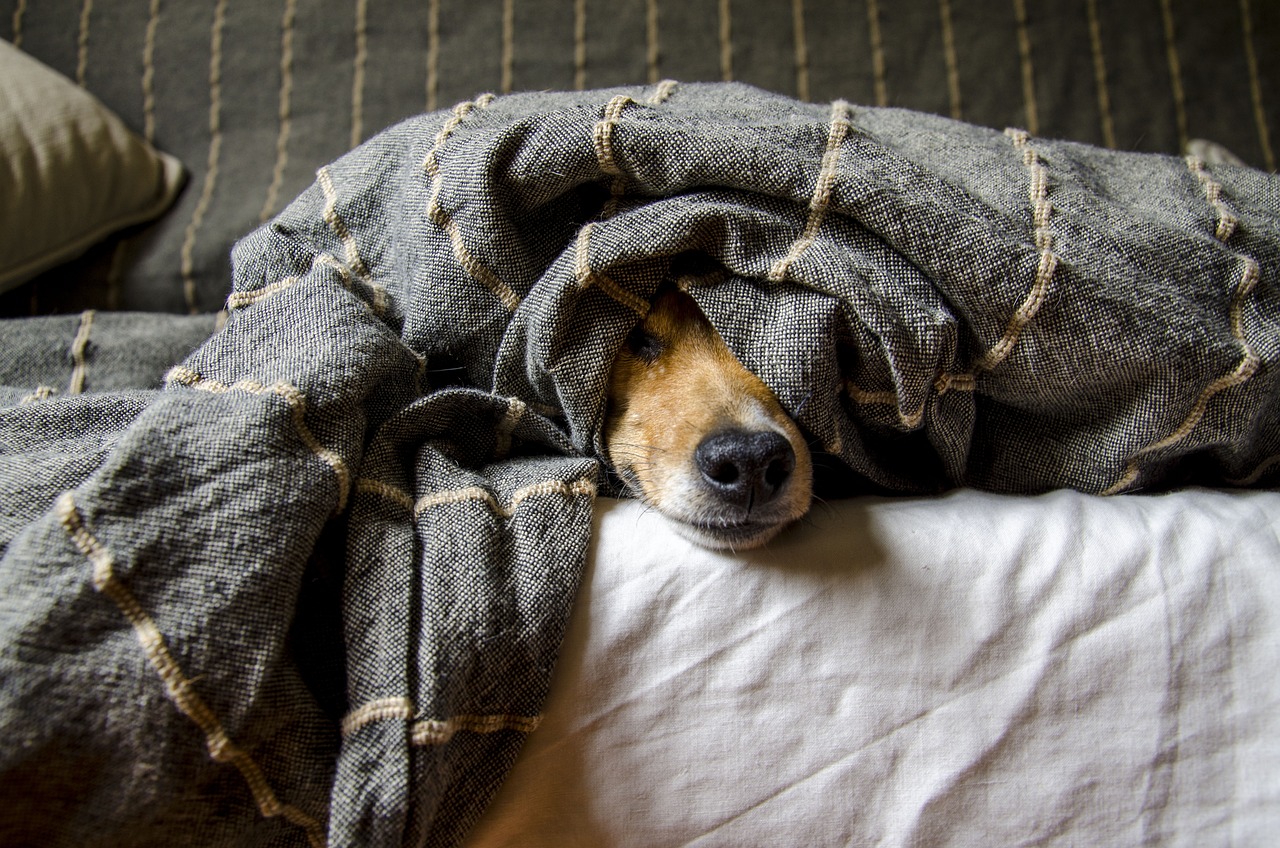
Benefits of Grooming for Pets
Grooming your pet is not just about keeping them looking fabulous; it goes far beyond aesthetics. Regular grooming provides a myriad of benefits that contribute to your pet's overall health and happiness. Imagine grooming as a form of preventive care—a way to catch potential health issues before they escalate into something serious. When you take the time to groom your pet, you are not only enhancing their appearance but also ensuring they feel their best.
One of the most significant advantages of grooming is its positive impact on your pet's skin health. Regular brushing helps to remove dirt, debris, and dead hair from your pet's coat, which can otherwise lead to skin irritations or infections. Moreover, grooming stimulates the skin and promotes the production of natural oils, resulting in a shiny and healthy coat. Just like how we feel refreshed after a good shower, pets feel revitalized after a grooming session.
Additionally, grooming serves as an excellent opportunity for early detection of health problems. While brushing or bathing your pet, you can easily spot unusual lumps, bumps, or skin conditions that may require veterinary attention. This proactive approach can be a lifesaver, as many health issues can be treated more effectively when caught early. So, the next time you groom your furry friend, remember that you're also acting as their first line of defense against potential health concerns.
Beyond physical health, grooming plays a crucial role in your pet's emotional well-being. Many pets find comfort in the routine of grooming, which can reduce anxiety and stress. The gentle touch of a brush or the soothing sound of water during a bath can create a calming environment for your pet. Think of grooming as a bonding experience; it’s a time for you and your pet to connect and relax together, strengthening your emotional bond. Regular grooming can foster a sense of security and comfort, making your pet feel loved and cared for.
Here’s a quick overview of some key benefits of grooming:
- Improved Skin Health: Regular grooming helps to maintain clean skin and a healthy coat.
- Early Detection of Health Issues: Grooming allows for the identification of potential health problems.
- Enhanced Emotional Well-Being: Grooming routines can reduce anxiety and create a sense of security.
- Increased Comfort: Regular grooming can lead to a more comfortable pet, free from matting and tangles.
As you can see, grooming is a multifaceted practice that benefits your pet in numerous ways. Whether you choose to groom your pet at home or seek the help of a professional, the important thing is to make grooming a regular part of your pet care routine. By doing so, you not only keep your pet looking great but also contribute to their overall health and happiness.
Q: How often should I groom my pet?
A: The frequency of grooming depends on your pet's breed, coat type, and lifestyle. Generally, long-haired breeds require more frequent grooming than short-haired ones. Aim for at least once a week for most pets.
Q: Can I groom my pet at home?
A: Absolutely! Many pet owners successfully groom their pets at home. Just ensure you have the right tools and knowledge about your pet's specific grooming needs.
Q: What if my pet doesn't like grooming?
A: It's common for pets to be hesitant about grooming. Start slowly, using positive reinforcement like treats and praise to create a more enjoyable experience. Gradually increase grooming time as your pet becomes more comfortable.
Q: When should I consider professional grooming?
A: If your pet has a complex coat type, suffers from anxiety, or if you simply lack the time or tools, professional grooming can be a great option. Professionals have the expertise to handle various breeds and grooming challenges.
Health Benefits
When it comes to our furry friends, grooming is more than just a cosmetic necessity; it’s a fundamental aspect of their overall health and well-being. Regular grooming sessions can serve as a crucial opportunity for pet owners to spot potential health issues before they escalate. Just think of it as a routine check-up, but much more fun for your pet! During these grooming moments, you have the chance to closely examine your pet’s skin, coat, and even their nails, which can reveal a lot about their health status.
For instance, while brushing your pet, you might notice unusual lumps, bumps, or irritations on their skin that could indicate underlying conditions. Early detection of skin issues, such as hot spots, allergies, or infections, can lead to timely veterinary intervention, which is key to preventing more serious health problems down the line. Additionally, grooming helps in the prevention of parasites like fleas and ticks, which can cause discomfort and lead to significant health complications if not addressed promptly.
Moreover, grooming isn’t just about the exterior; it can also have profound effects on internal health. Regular brushing and bathing can help keep your pet’s skin healthy by removing dead hair, dirt, and dander, which can contribute to skin infections if left unchecked. A clean coat is less likely to trap moisture and bacteria, which are often culprits in skin ailments.
Another important aspect to consider is dental health. While grooming primarily focuses on fur and skin, many grooming sessions can include dental care. Brushing your pet's teeth or using dental chews during grooming can significantly reduce plaque buildup and prevent periodontal disease, which is a common issue among pets. A healthy mouth contributes to a healthy body, as oral health is closely linked to overall health.
In addition to physical health benefits, grooming also plays a vital role in your pet's emotional well-being. The act of grooming can be a soothing ritual that helps reduce anxiety and stress in pets. Just like a relaxing spa day for humans, grooming can provide comfort and security to your furry companions, reinforcing the bond between you and your pet. It’s a time to connect, cuddle, and communicate, which can be incredibly beneficial for their mental health.
In summary, the health benefits of grooming are multi-faceted, encompassing everything from early detection of health issues to promoting emotional well-being. By making grooming a regular part of your pet care routine, you’re not only keeping them looking their best but also ensuring they feel their best. So, the next time you grab that brush or schedule a grooming appointment, remember that you’re doing much more than just tidying up; you’re actively contributing to your pet’s health and happiness.
- How often should I groom my pet? The frequency of grooming depends on your pet's breed and coat type. Long-haired breeds may require grooming several times a week, while short-haired breeds may only need it once a month.
- What tools do I need for grooming? Essential grooming tools include brushes, combs, pet-safe shampoos, and nail clippers. The specific tools will vary based on your pet's coat type and grooming needs.
- Can I groom my pet at home? Yes, many pet owners choose to groom their pets at home. However, for certain tasks like trimming nails or dealing with matted fur, professional grooming may be advisable.
- What should I do if I find a skin issue while grooming? If you notice any unusual lumps, bumps, or irritations, it’s best to consult your veterinarian for a thorough examination and appropriate treatment.
Emotional Well-Being
When it comes to our furry companions, their emotional well-being is just as crucial as their physical health. Imagine your pet as a sponge, soaking up all the love and care you provide. Regular grooming sessions are a fantastic way to nurture this bond, creating a safe space where your pet can feel secure and loved. Just like humans, pets can experience stress and anxiety, and grooming can play a pivotal role in alleviating these feelings. Have you ever noticed how your dog relaxes when you brush its fur? That’s not just a coincidence!
During grooming, pets often receive gentle touches and soothing words, which can help them feel calm and cherished. This routine can be particularly beneficial for anxious pets. Think of grooming as a mini spa day for your furry friend. It’s an opportunity to pamper them, and in return, they reward you with trust and affection. The repetitive nature of grooming can be comforting, much like how we find solace in familiar routines.
Moreover, grooming provides an excellent opportunity for pet owners to check for any signs of distress or discomfort. As you brush or bathe your pet, you’re not just cleaning their coat; you’re also observing their behavior and physical condition. This can lead to early detection of potential health issues, which can be a game-changer in ensuring their overall well-being. For instance, if you notice your pet flinching or reacting differently during grooming, it could be a signal that something is wrong, prompting you to seek veterinary advice sooner rather than later.
Not to forget, the emotional benefits of grooming extend beyond just the pets themselves. The act of grooming can also be therapeutic for pet owners. It allows for a moment of connection, a break from the hustle and bustle of daily life, and a chance to bond with your pet. It’s a win-win situation! So, the next time you pick up that brush or shampoo, remember that you’re not just maintaining your pet’s physical appearance; you’re also nurturing their emotional health.
To summarize, the emotional well-being of pets is intricately linked to grooming practices. Here’s a quick overview of how grooming contributes to a pet’s emotional health:
| Grooming Benefits | Description |
|---|---|
| Reduces Anxiety | Regular grooming sessions help pets feel secure and calm. |
| Strengthens Bond | Grooming fosters a deeper connection between pets and their owners. |
| Enhances Trust | Consistent grooming builds trust, making pets feel safe. |
| Early Detection | Grooming allows for monitoring of physical health and behavior. |
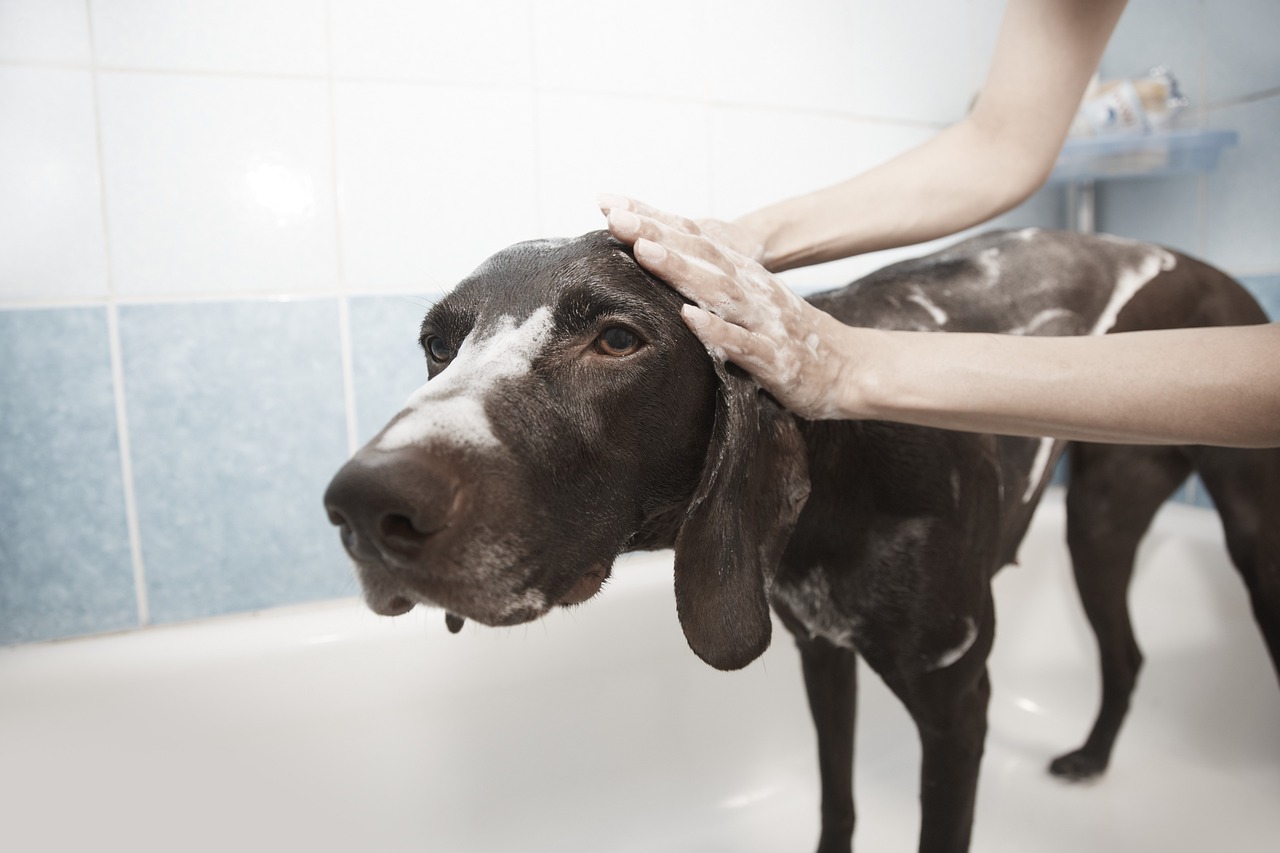
Professional Grooming vs. DIY Grooming
When it comes to grooming your furry friend, you might find yourself at a crossroads: should you hire a professional groomer or tackle the task yourself at home? This decision can feel as daunting as choosing between a fancy restaurant and a home-cooked meal. Both options have their unique flavors, and understanding the pros and cons of each can help you make the best choice for your pet's needs.
Professional grooming services offer a level of expertise that can be hard to match at home. Trained groomers have a wealth of knowledge about different breeds, coat types, and grooming techniques. They are equipped with specialized tools and products that can make the grooming process more efficient and effective. For instance, they know how to handle sensitive areas like the ears and paws, ensuring a comfortable experience for your pet. Plus, professional groomers can often spot potential health issues, such as skin irritations or parasites, during grooming sessions, providing you with valuable insights about your pet's health.
On the other hand, DIY grooming can be a rewarding experience that strengthens the bond between you and your pet. Grooming at home allows you to tailor the experience to your pet's specific needs and preferences. You can choose the products you know work best for your pet's skin and coat, and you can control the environment, making it less stressful for your furry companion. Additionally, grooming at home can save you money in the long run, especially if you have multiple pets or a breed that requires frequent grooming.
However, DIY grooming does come with its challenges. If you're not familiar with proper grooming techniques, you might inadvertently cause discomfort or even injury to your pet. Not to mention, some breeds have grooming requirements that can be quite intricate, requiring a certain level of skill that takes time to develop. If you're considering DIY grooming, it's essential to educate yourself on the right techniques and invest in the necessary tools. Here’s a quick comparison to help you weigh your options:
| Aspect | Professional Grooming | DIY Grooming |
|---|---|---|
| Expertise | High - trained professionals | Variable - depends on your skill level |
| Cost | Higher - ongoing expenses | Lower - initial investment in tools |
| Convenience | Scheduled appointments | Flexible - you choose when to groom |
| Health Monitoring | Professional assessment | Self-monitoring required |
| Bonding | Less personal interaction | Stronger bond through shared experience |
Ultimately, the choice between professional grooming and DIY grooming hinges on your pet's specific needs, your budget, and your comfort level with grooming tasks. Some pet owners find a happy medium by alternating between professional grooming sessions and at-home touch-ups. This way, they benefit from the expertise of a groomer while also enjoying the bonding experience that comes with grooming their pets at home.
Q: How often should I groom my pet?
A: It depends on the breed and coat type. Long-haired breeds may require grooming several times a week, while short-haired breeds may only need it once a month.
Q: Can I use human shampoo on my pet?
A: No, human shampoos can disrupt the pH balance of a pet's skin. Always use products specifically formulated for pets.
Q: What if my pet doesn't like being groomed?
A: Start slowly and make grooming a positive experience with treats and praise. Consider consulting a professional for tips on handling anxious pets.
Frequently Asked Questions
- How often should I groom my pet?
The frequency of grooming largely depends on your pet's coat type and shedding patterns. For example, long-haired breeds may require daily brushing, while short-haired pets might only need grooming once a week. Regular grooming not only keeps your pet looking good but also helps in monitoring their skin and overall health.
- What tools do I need for grooming my pet?
Essential grooming tools include brushes, combs, shampoos, and nail clippers. The specific tools you need can vary based on your pet's breed and coat type. For instance, slicker brushes are great for removing tangles in long-haired pets, while rubber brushes can be effective for short-haired breeds.
- Can I bathe my pet too often?
Yes, bathing your pet too frequently can strip their skin of natural oils, leading to dryness and irritation. Generally, it's recommended to bathe dogs every 4 to 6 weeks, but this can vary based on their activity level and coat type. Always use pet-specific shampoos to ensure their skin remains healthy.
- What are the signs that my pet needs grooming?
If you notice excessive shedding, matted fur, or an unpleasant odor, it’s likely time for a grooming session. Additionally, if your pet seems uncomfortable or is scratching more than usual, it could indicate that grooming is overdue, as it helps in identifying skin issues early.
- Should I consider professional grooming?
Professional grooming can be beneficial, especially for breeds that require specialized care or if you're unsure about grooming techniques. Professionals can also help with complicated tasks like nail trimming and dealing with matted fur. However, if you feel confident, DIY grooming can also be a great bonding experience!
- How can grooming improve my pet's emotional well-being?
Regular grooming can significantly reduce anxiety and stress in pets. The routine can foster a sense of security, as they become accustomed to being handled and pampered. Plus, the close interaction during grooming sessions can strengthen the bond between you and your furry friend.



